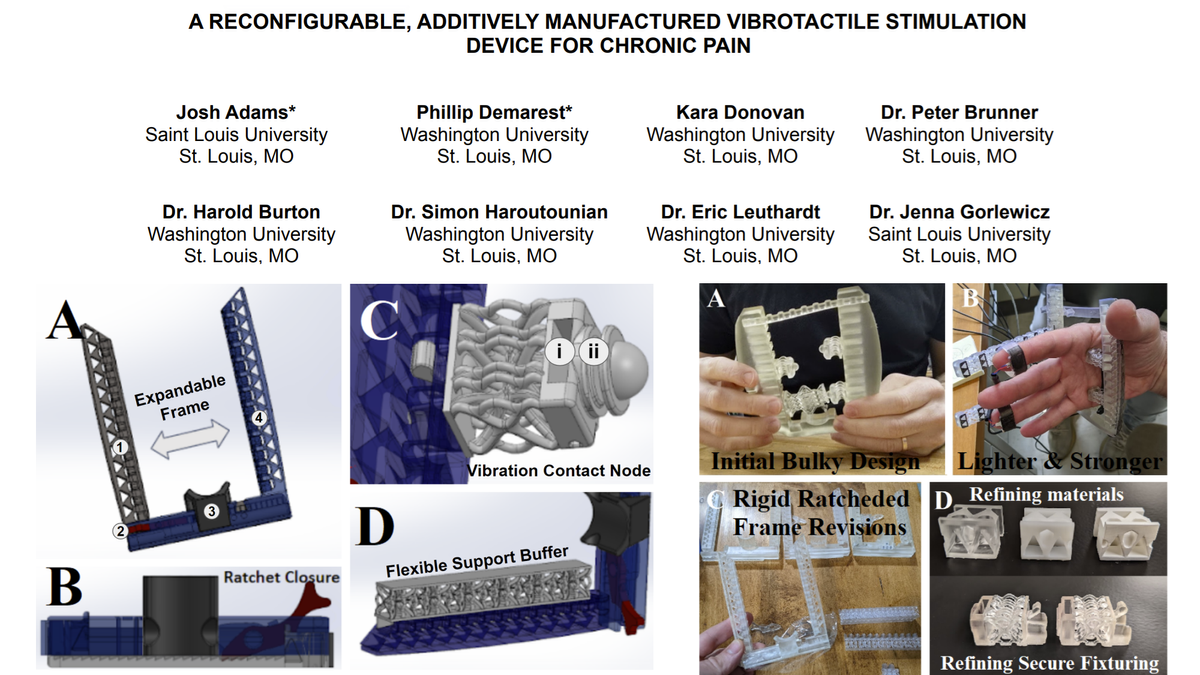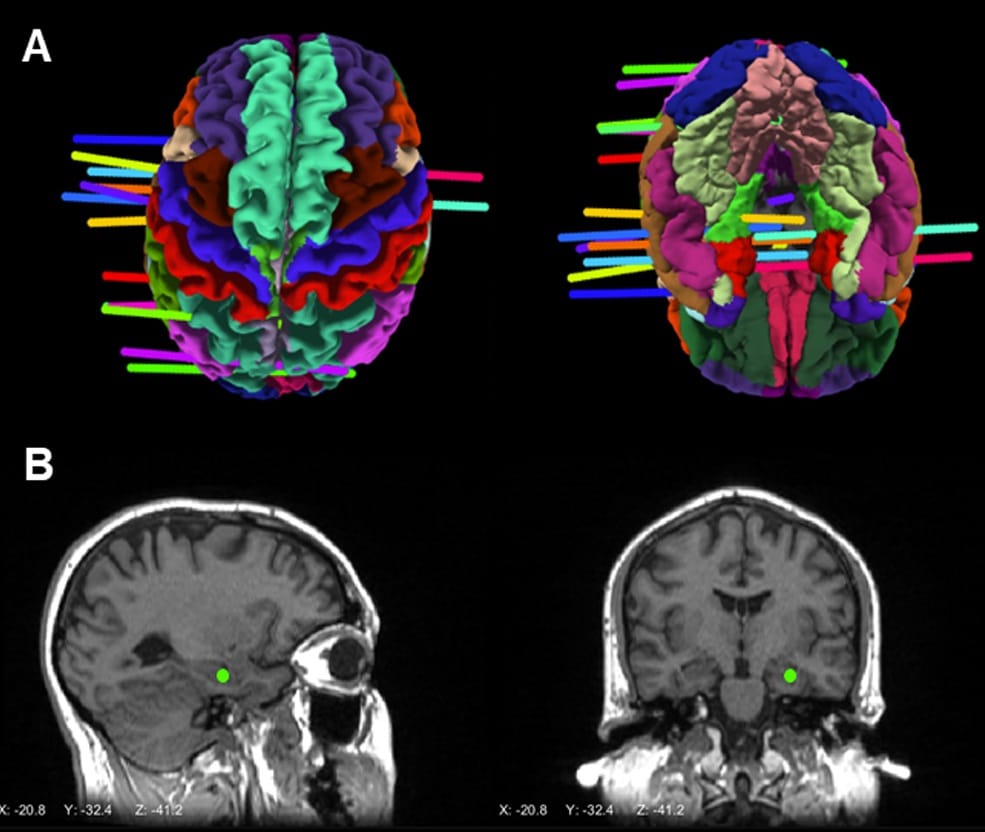Experimental wearable device for the treatment of chronic pain

I enjoyed designing and prototyping this medical device in the partnership between our CHROME Lab at Saint Louis University and the pioneering work by the team at the Leuthardt Lab at Washington University. I was proud to present our device and initial findings at the 2023 Design for Medical Devices conference in Minneapolis. We have a patent application in for this drugless experimental therapy addressing chronic pain.
Feel free to read our abstract, or the full paper published on the ASME site (linked below).
ABSTRACT
This paper presents an experimental chronic pain rehabilitation therapy utilizing vibration-based stimulation of the hand, wrist and lower arm, which has shown promise in reducing pain ratings in chronic pain patients (n=5) over a six-week treatment period. Based on the clinical need and practical use discoveries of that first trial, this paper outlines the development of a second-generation device that activates specific nerves through vibrotactile stimulation applied to the skin.
Several major steps in this process were the iterative design process, physical prototyping, conceptual modeling, and benchtop testing. Furthermore, this next generation device was tested with epilepsy patients undergoing invasive monitoring (stereotactic electroencephalography, sEEG) to collect electrophysiological measurements via implanted electrodes in the brain.

Early findings showed differential modulation of delta power in response to 2 Hz median nerve stimulation, but not during 12 Hz median nerve stimulation or 2 Hz ulnar nerve stimulation, hence indicating differential encoding of vibration features depending on frequency and spatial parameters. These patient trials also served to collect feedback for the continued development of the device to improve aspects such as ease of use, patient comfort, and ideal application of the vibration stimulus. Testing and development are ongoing with the enhancement of vibration isolating structures, more comfortable contact points, more durable additively manufactured structures, and embedded force sensors in the device.